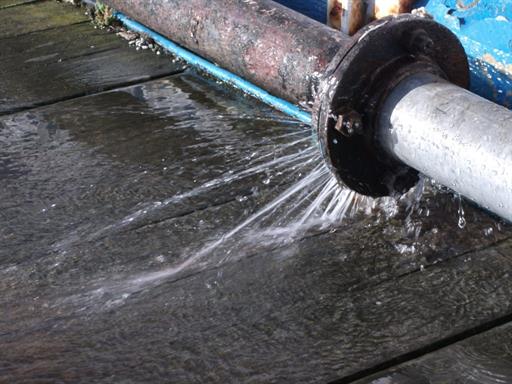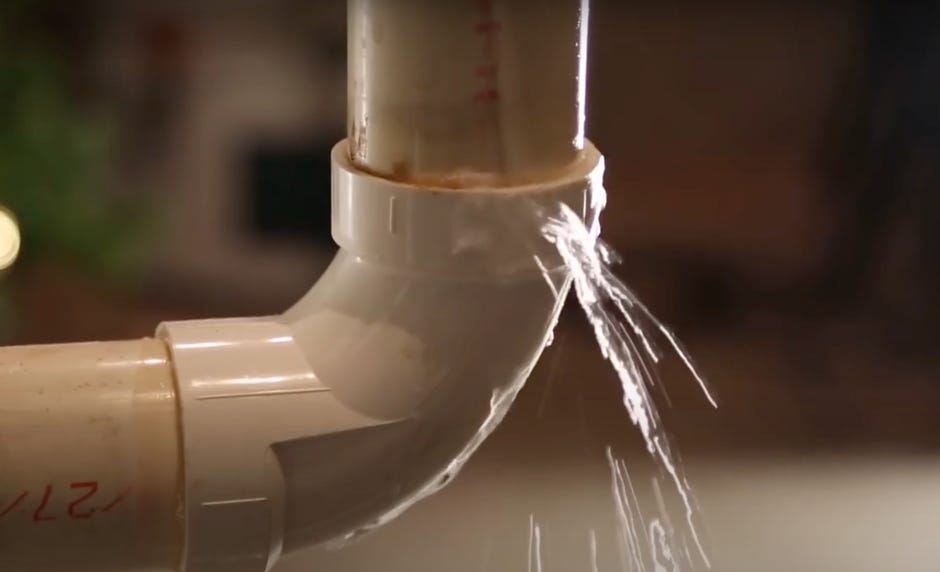Repairing Pipe Bursts - A Complete Guide to Restoration
Repairing Pipe Bursts - A Complete Guide to Restoration
Blog Article
We've encountered this post involving The Do s And Don ts After Water Damage listed below on the net and believe it made sense to share it with you on this page.

What should you do if a water pipe ruptureds in your home? The longer you wait, the more severe the damage that can take place to your home. For these factors, you need to find out just how to act in the occasion of a ruptured water pipe.
Shut down the Key Waterline Valve
The first thing to do? Close the shut-off shutoff. Try to find the regional shut-off valve to switch off the water in one particular location just. Go for the main water line shutoff and turn it off if you don't recognize where the localized shut-off valve is. This step will certainly remove the water promptly in your entire residence. Typically, the major valve is discovered outside the house alongside the water meter. If it's not there, you can additionally discover it in 2 locations: in the basement at eye level or the 1st floor on the ground. Generally, building contractors put the shut-off valve in the main ground degree washroom or best beside it.
Call Water Damages Reconstruction Pros for Aid
After shutting the water source, call the specialists for help. This scenario is not something you can do some do it yourself since the pipelines needed to be fixed and there is a requirement to resolve the various other problems to your building. Look for assistance from a reputable firm providing 24/7 emergency services if you can not deal. With their professional aid, you can avoid much larger water damages including deformed walls, loose floor tiles, or damaged frameworks. Do not take this problem lightly and also look for specialist guidance for your full peace of mind as well as a trustworthy option.
Record the Damage For Insurance
While you're waiting on the pros to arrive, obtain some documents of the damage brought on by the wayward pipeline. Take images and videos of whatever. Do close-up shots of the damaged places and also belongings. Your paperwork will certainly act as evidence for your property owner's insurance. Maintaining positive with this circumstance assists you to file a claim for coverage, which will additionally support you as well as your family members to come back on your feet.
Recover Things That Can Be Saved
Check out the harmed things and take out the most essential ones from the stack once you're done taking photos. Dry them off in a dry/warm location away from the broken area as well as attempt to preserve them as high as you can. Drag as much moisture as you can to the product so it can begin to dry out.
Start the Drying Process
You need to start the drying procedure asap. Fortunately, the water from your waterlines is already clean so you don't have to fret about sewer water. Nonetheless, the streaming water might have disrupted the dirt as well as particles in your floorboards and rugs. In this situation, placed some gloves on as well as start some troubleshooting. Usage containers to unload out the water. Blot out as much water as you can from the surface areas with old towels. Turn on an electric fan or open your home windows to promote air flow. These actions will certainly quicken to completely dry and also deter mold as well as mold development.
Experts are the only individuals certified to assess correctly as well as deal with the burs pipelines and also subsequent damage. They typically provide silent red flags like gurgling paint, water discolorations.
What should you do if a water pipeline ruptureds in your residence? For these factors, you require to find out just how to act in the occasion of a ruptured water pipe. After shutting the water source, call the experts for assistance. With their specialist aid, you can stop much bigger water damages including deformed walls, loose floor tiles, or harmed structures. Thankfully, the water from your waterlines is already clean so you do not have to stress concerning sewer water.
Steps to Deal with a Burst Pipe and a Flooded House
Disconnect your electrical
To prevent electrocution, make sure the electrical systems in your home are turned off. Do not wade into standing water with the power on. If water is blocking your path to your breaker box, look for a main shutoff on the exterior of your home or call an electrician.
Stop the source of the flooding
If your flooding is caused by a burst pipe or valve rather than an act of nature, it should be fairly easy to stop at its source. Just turn off the main water shutoff valve. Some homes have a valve located near where the main water line enters your home, while other homes have a valve attached or adjacent to a water meter, which is sometimes buried near the street.
Call your insurance company
Your water damage will most likely be covered under your homeowners insurance policy. The first step to start the claims process is to call your insurer to let them know about the situation. To make sure that your claim is successful, ask your insurer whether a claims adjuster needs to visit your home to document the damage before you begin the cleanup and repair process, or if your photos of the damage will suffice.
Document everything
No matter what your insurer says, it's always a good idea to carefully document all the water damage to your home to assist with your insurance claim. Simply take photos and videos with your phone and make note of everything the water touched, including your possessions and the structure of your home itself.
Remove standing water
If the water is primarily in your basement, and you have a floor drain, you may be able to use a squeegee mounted on a handle (pick one up at any hardware store) to push water to the drain, or use a mop and bucket. With most of the standing water removed, use a wet-dry vac (make sure to remove the filter for dry vacuuming) to start removing water from harder-to-reach areas.
Start drying out your home yourself
While you are waiting for your contractor to get started, you can begin the process of drying out your home by following these steps: a) open your windows to let moist air escape; b) start as many dehumidifiers as possible; c) cycle your HVAC system between heating (to 80 degrees) and cooling (to 60 degrees), which pulls moisture into the air and then removes it. You can rent industrial-size blowers and dehumidifiers to speed up the drying process.
Prevent mold and mildew caused by water damage
The damage to your home and property is only half the battle. If not properly dealt with, water damage can have farther-reaching effects on your home and health in the form of toxic mold and mildew. In fact, these secondary effects are often worse than the initial property damage, so it's important to take them seriously and dry out the affected areas as quickly as possible. If a surface can't be dried quickly, it should be removed and discarded. If you are working with a water damage cleanup company, they will have the proper equipment to dry out your home. If you are cleaning up the water damage yourself, be sure to educate yourself on how to remove and repair wet drywall and insulation, as well as flooring.
https://www.crddesignbuild.com/blog/10-steps-to-deal-with-a-burst-pipe-and-a-flooded-house

Do you like more info about The Do s And Don ts After Water Damage? Create feedback further down. We'd be pleased to hear your opinion about this article. We are looking forward to see you back again later on. Loved our piece? Please share it. Help another person check it out. Thanks for your time. Visit us again soon.
Resolve today, call! Report this page